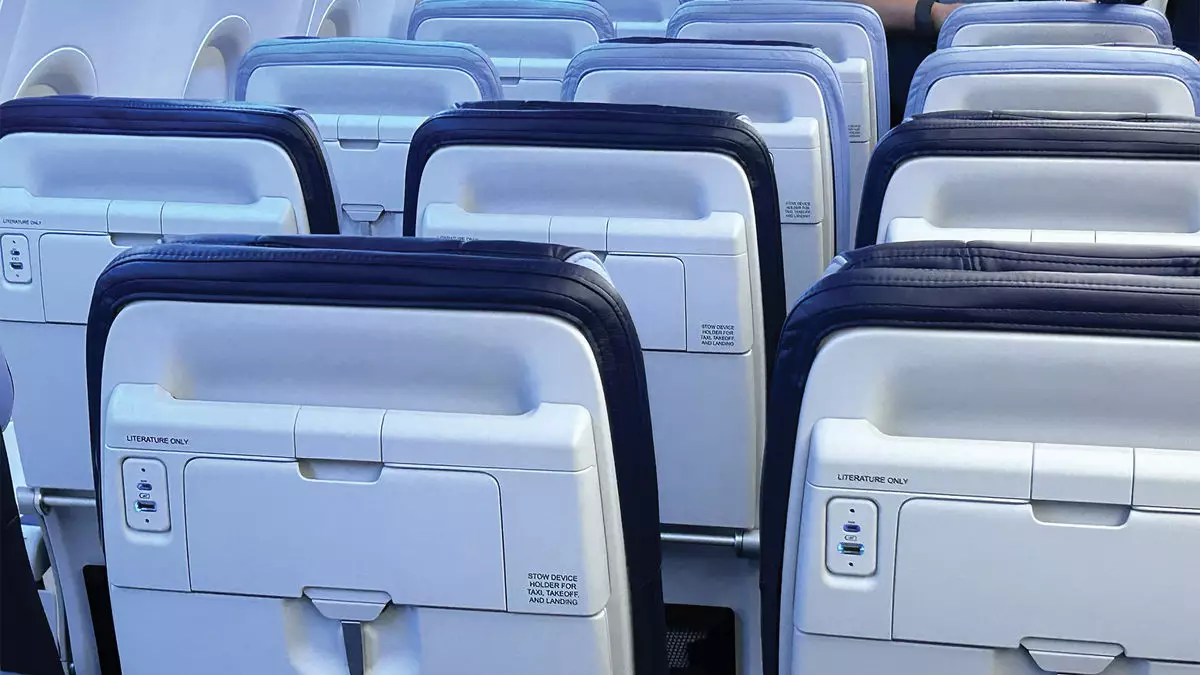Southwest Airlines, a prominent player in the low-cost airline market, is set to undergo significant changes in its aircraft configuration, though the implementation timeline has faced delays. Initially, the airline planned to commence retrofitting planes equipped with extra-legroom seats by March 2025. However, the new schedule is now aimed at mid-2025, projecting a broader rollout of these enhancements. This delay might be disappointing for some travelers, as the airline won’t allow for additional legroom purchases until the first half of 2026, coinciding with the anticipated introduction of a new assigned seating system.
The extra-legroom seating, which is expected to be available on approximately one-third of Southwest’s planes, will provide passengers with an impressive 34 inches of leg space. This increase speaks directly to the airline’s focus on improving passenger comfort—a critical factor in customer satisfaction within the competitive airline industry. To implement these changes, Southwest is adjusting row spacing in their larger 737-8 models, reducing regular seat spacing by one inch, resulting in a final configuration of 31 inches. Such moves indicate that while the airline is keen on enhancing the travel experience, it must also navigate the intricacies of aircraft regulations and passenger yield management.
The transformation process hinges on obtaining necessary certifications from the Federal Aviation Administration (FAA). The airline anticipates receiving weight and balance certification in the first quarter of 2025. However, a more critical certification, the Supplemental Type Certificate, is not expected until at least the second quarter, potentially holding up the retrofitting progress. Such regulatory dependencies are particularly concerning for an airline aiming to reposition itself competitively through enhanced offerings, especially as budget-conscious travelers increasingly seek value in their flying experience.
CEO Bob Jordan has emphasized the importance of these improvements to bolster Southwest’s market standing. It’s important to understand that timely certification is not merely a bureaucratic hurdle but a vital aspect that could determine the success of the passenger experience enhancements and impact financial performance.
In conjunction with these aircraft upgrades, Southwest Airlines is simultaneously pursuing innovative partnerships to diversify its service offerings. The airline announced an interline partnership with Icelandair, set to launch on February 13 in Baltimore, with plans for further expansion into Nashville and Denver later in the year. Such strategic moves foster greater travel connectivity between U.S. travelers and Iceland, ultimately broadening Southwest’s appeal to international travelers—a crucial market segment in a post-pandemic world.
Moreover, the rebranding of their vacation package services under “Getaways by Southwest” marks another strategic pivot. This initiative aims to streamline customer offerings by securing partnerships with notable Las Vegas establishments, including MGM Resorts. The initiative not only increases hotel inventory accessibility for travelers but also aligns well with Southwest’s vision of enhancing passenger experience, expanding its brand footprint beyond air travel.
Despite transformation trials, Southwest Airlines managed to post a net income of $261 million in the fourth quarter, representing a rebound from a previous loss. This financial performance, despite experiencing a competitive market landscape, signals resilience and adaptability in operational strategies. Operating revenue growth of 5.3% in 2024 reflects a successful increase in market capacity, hinting that the airline has effectively managed resources and navigated fluctuating fuel costs to bolster its financial standing.
Jordan’s comments about reaching profitability goals indicate the airline’s readiness for growth. Notably, their margin forecast for 2025—projecting between 3% to 5% as compared to 1.2% in 2024—illustrates a strong commitment to financial optimization and operational efficiency. Such goals are vital as Southwest navigates the twin demands of enhancing passenger experiences while remaining a competitive, cost-effective choice for air travel.
Southwest Airlines stands at a transformative crossroads, with improvements slated for its aircraft fleet and service options. Delays in aircraft reconfigurations and regulatory requirements represent hurdles that could dampen momentum. However, robust earnings reports and smart partnerships indicate a promising future.
Ultimately, how Southwest navigates these changes and adapts its strategies will determine its ability to deliver on its commitment to passenger experience and financial health. The airline’s journey ahead lies in balancing innovation with operational realities while fostering a culture of customer-first services. As travelers await these long-anticipated upgrades, the degree to which Southwest meets these expectations could reshape its brand and standing in the competitive landscape of air travel.

